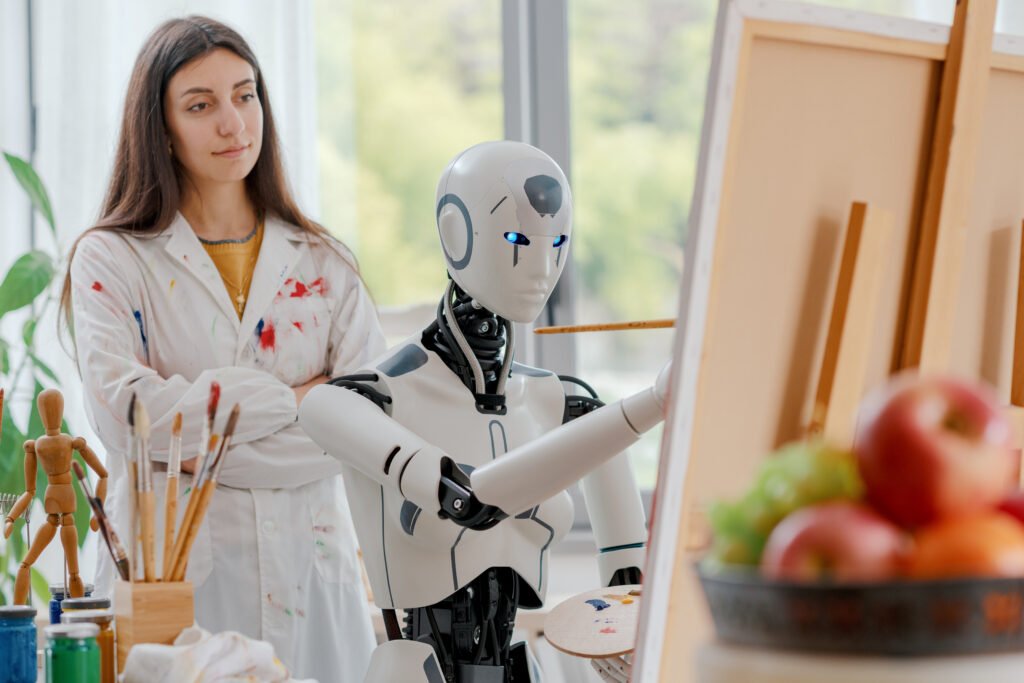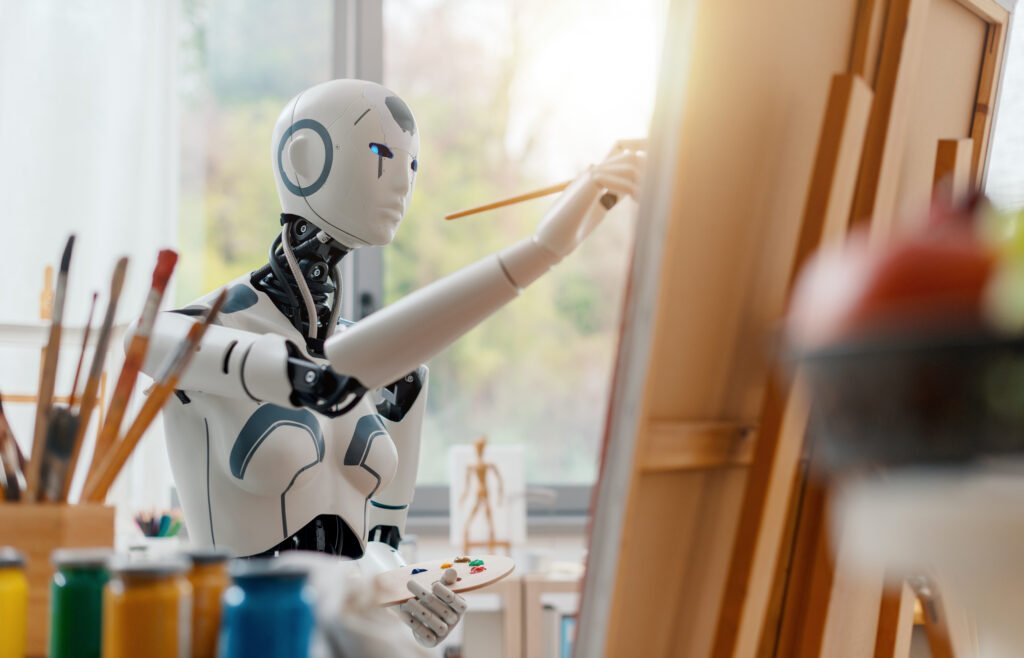Contemporary art is experiencing a profound transformation, and artificial intelligence (AI) is at the center of this change. From tools that generate realistic images to algorithms that create complex sound compositions, AI expands creative possibilities and redefines the role of the artist.
More than a technological resource, AI has become a creative partner. It allows artists to experiment with previously impossible processes, explore unexpected combinations, and question traditional concepts of authorship, authenticity, and originality.
The Roots of AI in Contemporary Art
Although the use of computers in art dates back to the 1960s and 1970s, with the first experiments in computer art, the qualitative leap occurred in the 21st century. According to the book Artificial Intelligence and the Arts, by Penousal Machado, published in 2019, advances in neural networks and deep learning allowed AI to move from a mere calculation tool to a collaborator in creation.

These technologies analyze patterns, learn from large datasets, and generate new visual, musical, or textual compositions. In contemporary art, this means that an artist can train an AI model with personal references and obtain works that resonate with their aesthetic while presenting unexpected elements.
This relationship between human control and machine autonomy creates a space for creative tension. On one hand, there is artistic intention; on the other, the unpredictability of AI can surprise even its creator.
AI and Digital Art: New Languages and Formats
The convergence of AI and digital art has generated innovative artistic languages. According to the book Deep Learning and Creativity, by Anna Ridler, published in 2021, AI in digital art goes beyond generating realistic images. It also involves creating immersive, interactive, and adaptive experiences, where the artwork can respond to the audience’s behavior.
In the realm of digital art, AI acts both in the process and the product. In the process, it automates complex tasks such as rendering, simulating light and sound, or generating textures, allowing the artist to focus on conceptual aspects. So, in the product, it creates unprecedented results—like portraits that change in real time or installations that “learn” from visitor interaction.
Technology also enables unprecedented collaborations among artists from different disciplines. Painters, musicians, and programmers can work together on hybrid projects where code, visual aesthetics, and sound merge organically.
The Challenge of Authorship and Originality
With AI playing such an active role in creation, the question arises: who is the true author of the work? According to the book The Creativity Code, by Marcus du Sautoy, published in 2019, AI raises profound discussions about the essence of creativity. The author argues that although the machine executes the work, curation, parameter selection, and final interpretation remain human responsibilities.
In contemporary art, this discussion is particularly relevant because it challenges traditional notions of authorship dating back to the Renaissance. Now, creative acts can be shared between human and machine, and originality is no longer exclusively a human attribute.
Despite the controversies, many critics recognize that AI does not diminish the value of art. On the contrary, it expands forms of expression, producing works that would be impossible without the collaboration between human creativity and computational power.
The Future of Art in the AI Era
The impact of AI on contemporary art goes far beyond aesthetics. It transforms the way we think about, produce, and experience art. We are entering a new era in which the work can be alive, mutable, and interactive, and in which the artist can act more as an orchestrator of creative systems than as the sole author.
Just as photography and cinema expanded the boundaries of art in their time, AI redefines what is possible today. In the future, we will see not only more AI-created works but also entirely new artistic genres that we cannot yet imagine.
Contemporary art, powered by artificial intelligence, does not just imitate life—it recreates it, reinterpreting it in ways that challenge our perception and invite us to rethink the very concept of creativity.



